알라딘: [전자책] 철학이 있는 도시
철학이 있는 도시 - 그림으로 읽는 우리 시대, 한국 도시 인문학


우석영 (지은이)궁리2017-01-02

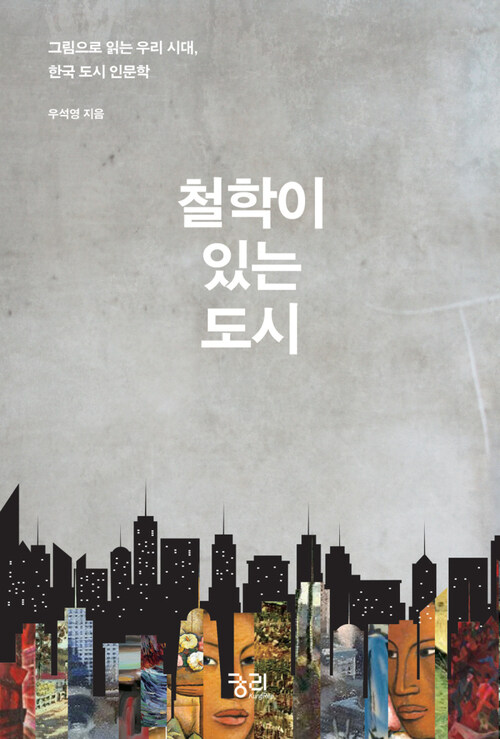


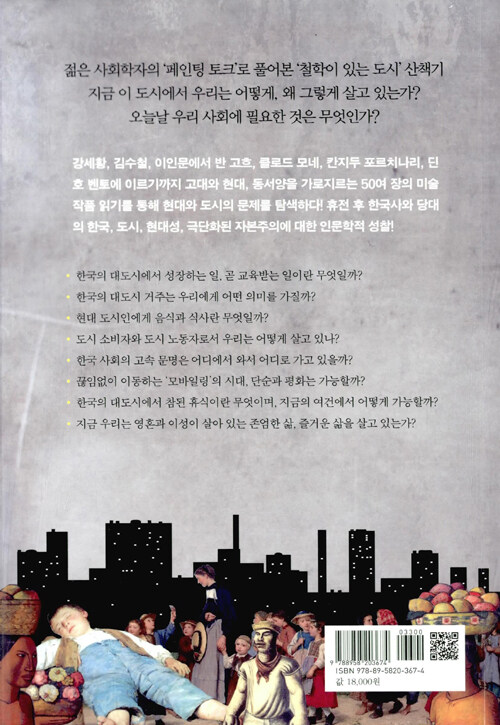
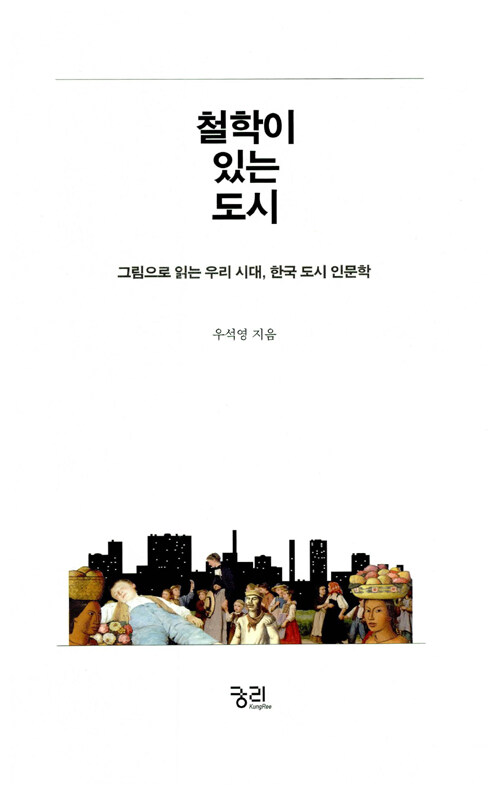

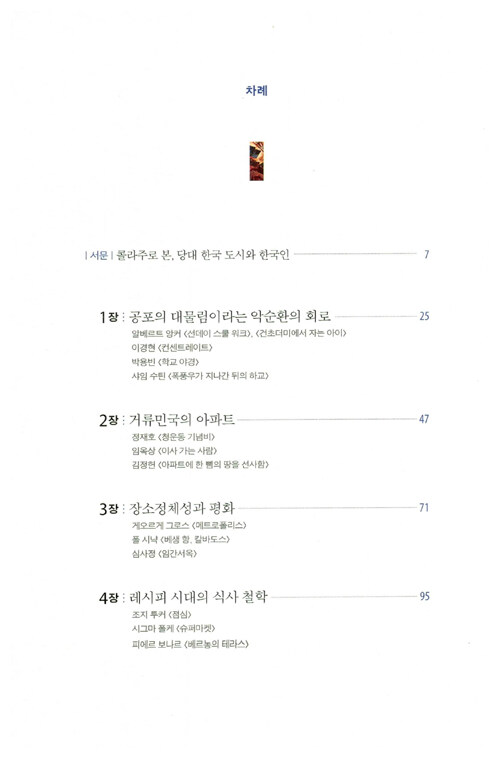

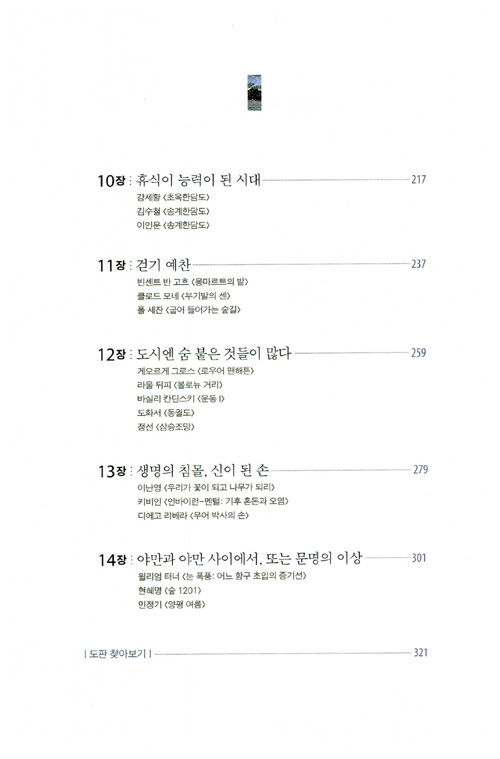
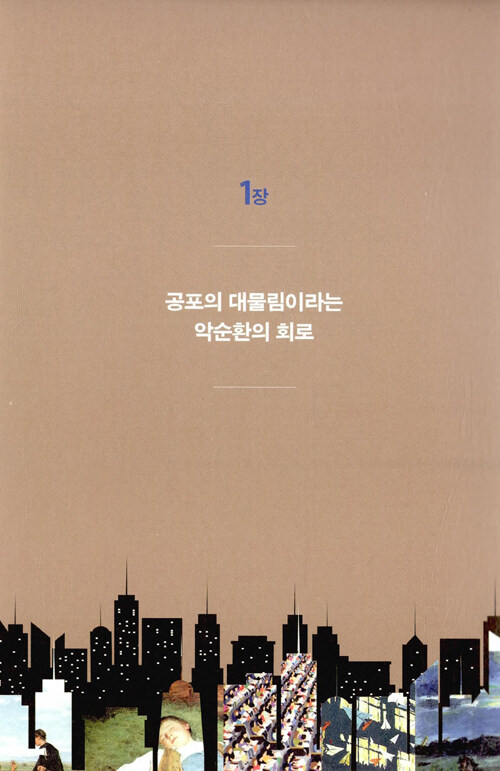

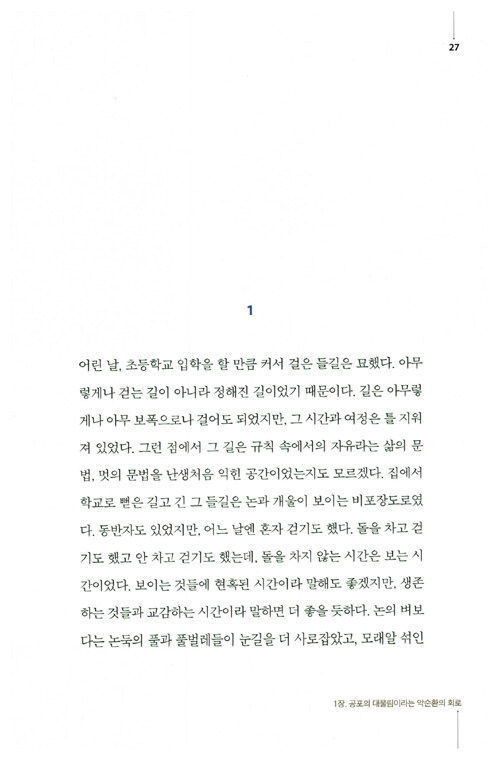

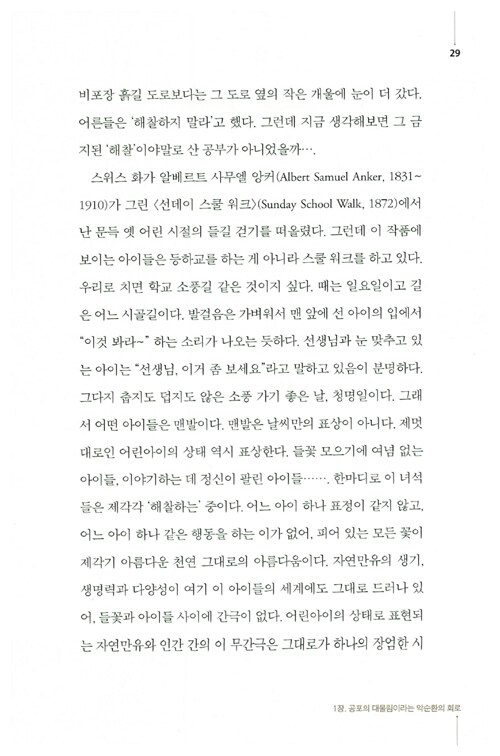
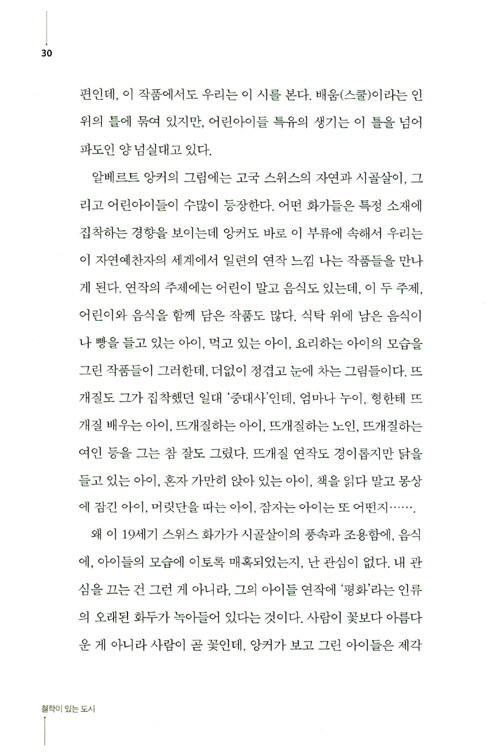

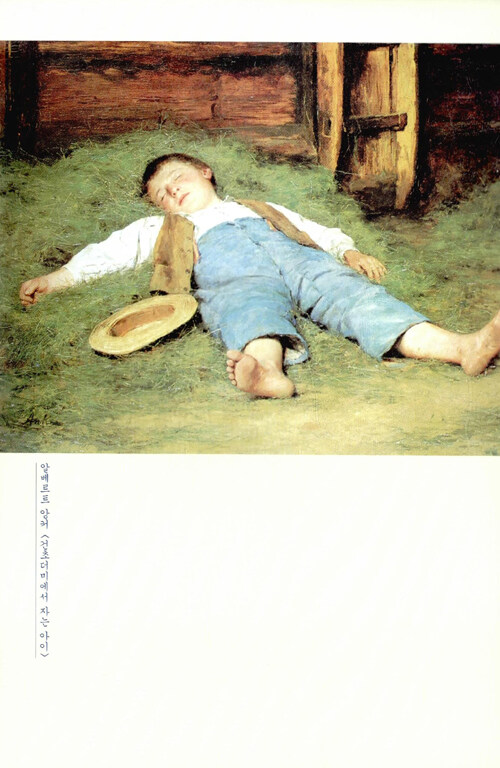
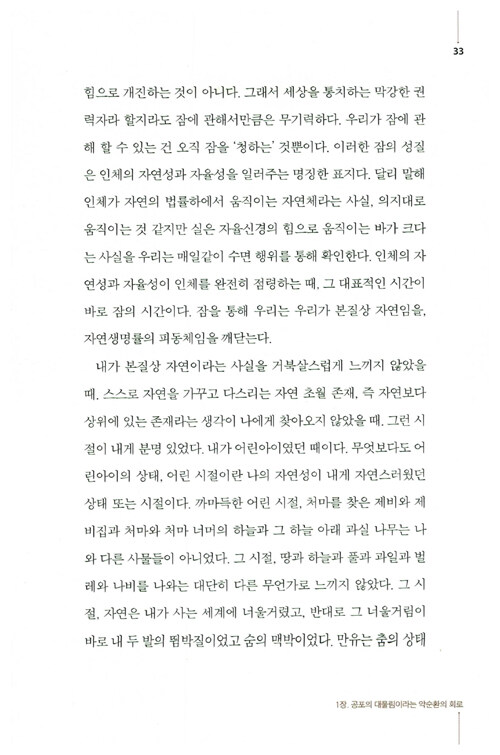

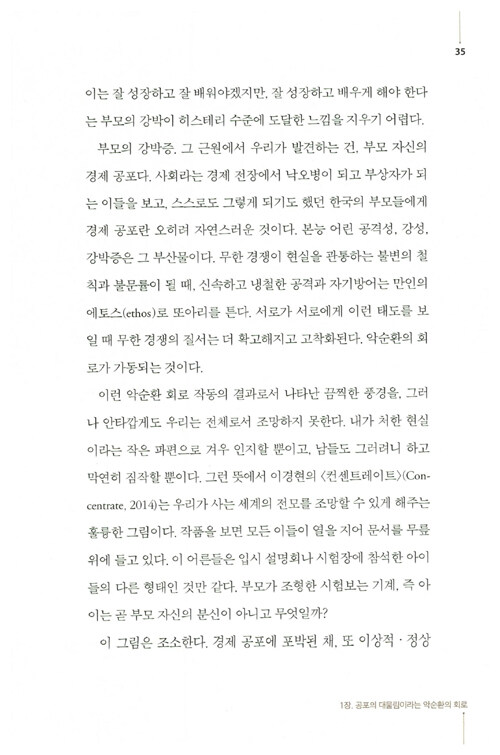
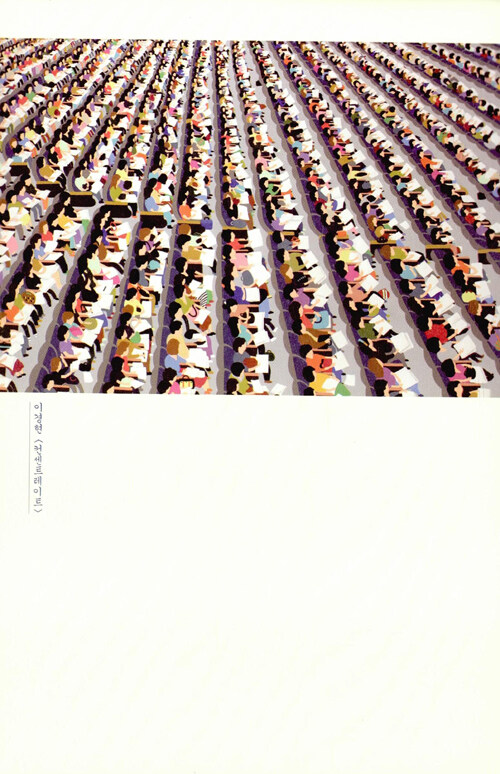
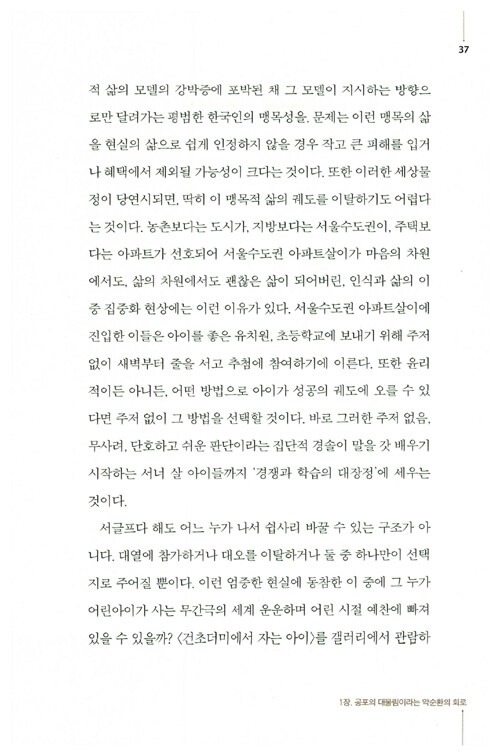

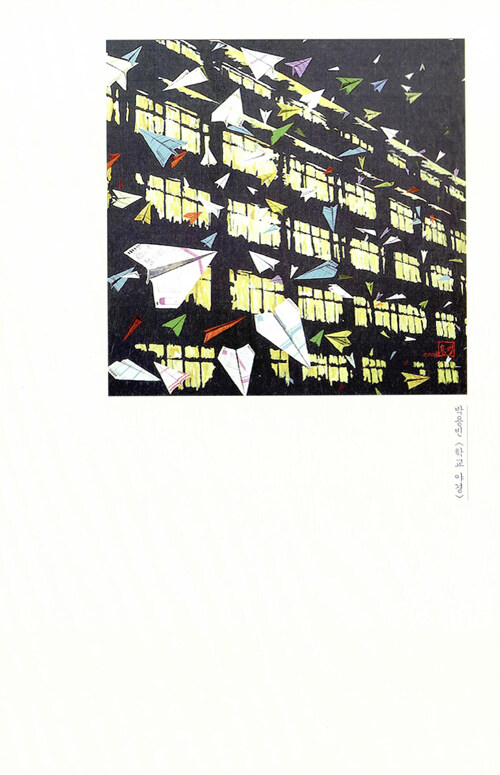


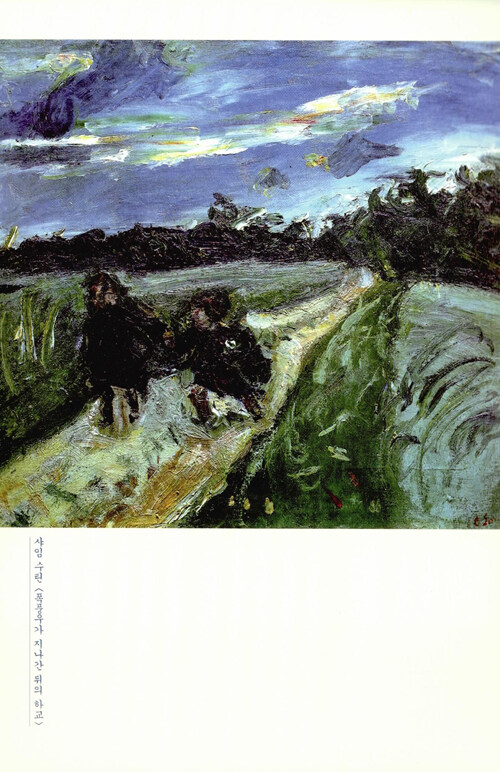
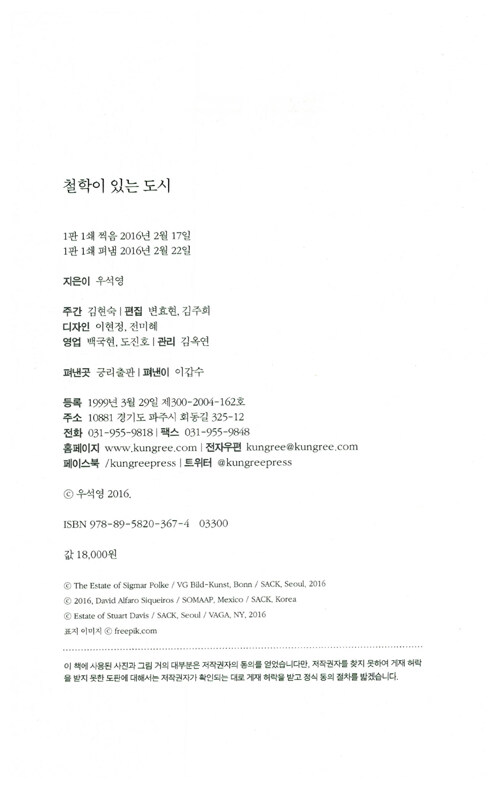
종이책
18,000원 16,200원 (

전자책정가
14,400원
판매가
제공 파일 : ePub(42.15 MB)
TTS 여부 : 지원
종이책 페이지수 328쪽
책소개
고대와 현대, 동서양을 가로지르는 다양한 미술작품 읽기로 한국인의 당대 이해, 자기 분석을 돕는 책이다. 저자는 개개인의 인간적 삶이 처참히 무너져내리고 있는 우리 사회의 모습에 주목하면서, 대다수의 한국인이 오늘날 도시에서 어떻게 살고 있는지, 또 왜 그렇게 살아가게 되었는지, 이 시대의 집합적 삶을 그 근원에서 네비게이팅하는 정신성과 그 뿌리는 무엇인지 등을 탐구한다.
저자 우석영은 철학, 사회학 분야 연구자이자 집필가로 연세 대학교, 시드니 대학교 대학원, 뉴사우스웨일스 대학교 대학원을 유랑하며 예술사회학, 문학, 철학 분야의 내공을 쌓았다. 저자는 시대를 비추는 그림들을 통해 '지금 이 도시에서 우리가 어떻게, 왜 그렇게 살고 있는가'라는 선뜻 답하기 어려운 화두에 독자들이 좀 더 가벼운 마음으로 다가서고 답을 찾을 수 있도록 돕는다.
50여 장의 다채로운 미술작품들은 오늘날 한국과 한국인, 도시의 문제를 탐색하는 도움을 주는 한편으로, 가만히 들여다보는 것만으로도 독자로 하여금 사색과 철학의 길을 열어주는 놀라운 힘을 발휘하고 있다. 저자는 각기 다른 꼴을 합성하여 새로운 전체를 만드는 콜라주 기법으로 이야기를 완성해간다. 즉 도시와 도시살이의 여러 다른 풍경들을 조합하여 한국 대도시의 전체 풍경을 펼쳐보이는 동시에, 우리네 민낯을 고스란히 마주할 수 있도록 안내하고 있는 것이다.
목차
|서문 | 콜라주로 본, 당대 한국 도시와 한국인
1장. 공포의 대물림이라는 악순환의 회로
알베르트 앙커 <선데이 스쿨 워크>, <건초더미에서 자는 아이>
이경현 <컨센트레이트>
박용빈 <학교 야경>
샤임 수틴 <폭풍우가 지나간 뒤의 하교>
2장. 거류민국의 아파트
정재호 <청운동 기념비>
임옥상 <이사 가는 사람>
김정헌 <아파트에 한 뼘의 땅을 선사함>
3장. 장소정체성과 평화
게오르게 그로스 <메트로폴리스>
폴 시냑 <베생 항, 칼바도스>
심사정 <임간서옥>
4장. 레시피 시대의 식사 철학
조지 투커 <점심>
시그마 폴케 <슈퍼마켓>
피에르 보나르 <베르농의 테라스>
5장. 음식, 도시인의 자기 이해 관문
칸지두 포르치나리 <커피 수확>, <커피 농부>
알프레도 마르티네스 <과일 든 여인들>
라울 뒤피 <아름다운 여름>
김정헌 <흙산>
6장. 인간에서 고객님으로, 인격 마케팅 시대를 애도함
오윤 <마케팅 2-발라라>
딘호 벤토 <인간 동물 II>
조지 투커 <웨이팅 룸>
최동열 <서커스 독>
7장. 프레카리아트의 탄생
다비드 알파로 시케이로스 <프롤레타리안 마더>
빈센트 반 고흐 <아니에르의 공장>
임옥상 <행복의 모습>
게오르게 그로스 <실직 상태>
8장. 고속 문명, 어디에서 와서 어디로 가는가?
베르나르 간트너 <석양 쪽으로 향하는 증기기관차>
라울 뒤피 <전기 요정>
로베르 들로네 <행진의 현장-붉은 타워>
윌리엄 터너 <비, 증기, 속도-위대한 서부철도>
9장. 모바일링의 시대, 단순과 평화는 어떻게 가능한가?
클로드 모네 <눈 속의 산드비켄 마을>
스튜어트 데이비스 <멜로우 패드>
탕인 <동음청몽도>
10장. 휴식이 능력이 된 시대
강세황 <초옥한담도>
김수철 <송계한담도>
이인문 <송계한담도>
11장. 걷기 예찬
빈센트 반 고흐 <몽마르트의 밭>
클로드 모네 <부기발의 센>
폴 세잔 <굽어 들어가는 숲길>
12장. 도시엔 숨 붙은 것들이 많다
게오르게 그로스 <로우어 맨해튼>
라울 뒤피 <볼로뉴 거리>
바실리 칸딘스키 <운동 I>
도화서 <동궐도>
정선 <삼승조망>
13장. 생명의 침몰, 신이 된 손
이난영 <우리가 꽃이 되고 나무가 되리>
키비인 <인바이런-멘털: 기후 혼돈과 오염>
디에고 리베라 <무어 박사의 손>
14장. 야만과 야만 사이에서, 또는 문명의 이상
윌리엄 터너 <눈 폭풍: 어느 항구 초입의 증기선>
현혜명 <숲 1201>
민정기 <양평 여름>
| 도판 찾아보기 |
접기
책속에서
“삶을 견딘다는 것, 삶을 지나간다는 것, 삶이 그럭저럭 살아진다는 것. 이것과 삶을 살아간다는 것, 순간순간 풍요로운 지금, 자신의 온전성을 느끼며 삶을 즐겁게 살아간다는 것은 굉장히 다른 것입니다. 여러분은 어떤 쪽인가요? 여기 이 땅, 대한민국에서 우리는 삶을 살아가고 있나요? 우리는 위기의 시대, 새로운 가치의 모색기에 도... 더보기
저자 및 역자소개
우석영 (지은이)
저자파일
최고의 작품 투표
신간알림 신청
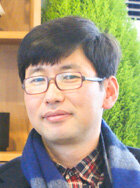
환경철학 연구자이자 작가. 산책 중독자. 삶의 모든 단면에서 자연과 행복하게 교감하고 친교하는 자립의 삶을 지향하고 있다. 쓴 책으로 『낱말의 우주』 『수목인간』 『철학이 있는 도시』 『동물 미술관』 『배려의 식탁, 제주』(공저), 『21세기를 살았던 20세기 사상가들』 (공저) 등이 있으며, 옮긴 책으로 반다나 시바의 『이 세계의 식탁을 차리는 이는 누구인가』, 마사 누스바움의 『학교는 시장이 아니다』 등이 있다. woosky.org에서 다양한 글과 작품을 만나볼 수 있다.
paixici@gmail.com
최근작 : <21세기를 살았던 20세기 사상가들>,<동물 미술관>,<배려의 식탁, 제주> … 총 16종 (모두보기)
SNS : //twitter.com/readingjoy
출판사 제공 책소개
“그들은 여기 살고 있다!
그러나 우리는 살고 있나?
우리 임시 거주민들.
그릇된 별을 추종하는 우리들은
여기 이 섬에서 난파되었다,
늪에서처럼.”
- 파블로 네루다, 「인간 9」 중에서
“삶을 견딘다는 것, 삶을 지나간다는 것, 삶이 그럭저럭 살아진다는 것. 이것과 삶을 살아간다는 것, 순간순간 풍요로운 지금, 자신의 온전성을 느끼며 삶을 즐겁게 살아간다는 것은 굉장히 다른 것입니다. 여러분은 어떤 쪽인가요? 여기 이 땅, 대한민국에서 우리는 삶을 살아가고 있나요? 우리는 위기의 시대, 새로운 가치의 모색기에 도달해 있습니다.” - 저자의 말 중에서
젊은 사회학자의 ‘페인팅 토크’로 풀어본 ‘철학이 있는 도시’ 산책기
이방인이 된 자의 눈에 발각된 우리 시대의 민낯은 어떤 모습일까?
당대의 한국, 한국인, 도시, 현대성, 극단화된 자본주의에 대한 인문학적 성찰!
고대와 현대, 동서양을 가로지르는 다양한 미술작품 읽기로 휴전 후 한국사, 우리 시대, 도시, 집단과 개인의 문제를 논의하는 이 책 『철학이 있는 도시』는 한국인의 당대 이해, 자기 분석을 돕고자 쓰였다. 저자는 개개인의 인간적 삶이 처참히 무너져내리고 있는 우리 사회의 모습에 주목하면서, 대다수의 한국인이 오늘날 도시에서 어떻게 살고 있는지, 또 왜 그렇게 살아가게 되었는지, 이 시대의 집합적 삶을 그 근원에서 네비게이팅하는 정신성과 그 뿌리는 무엇인지 등을 탐구해나가는 일이 시급함에도 하루하루 먹고살기 바쁜 일상에 밀려 경도되고 있는 현실에 답답함과 안타까움을 느껴왔고, 이에 이 책을 집필하게 되었다. 이러한 기획이 가능했던 것에는 꽤 특별한 사정이 있다. 이 나라의 대도시가, 해외(호주)에서 10년의 외유를 하고 돌아온 저자의 눈에 돌연 발각되었기 때문이다. 이 책에서 논의되는 도시는 반절은 이방인인 젊은 사회학자에게 발각된 도시다.
“국가가 언제나 강조되며 국민 위에 군림해왔지만, 국민의 이익을 대변하고 보호하는 국가는 빈곤한, 그보다는 사기업이 피고용자-개인의 이익을 보호하는 (국가 없는 국가주의라는) 모순적인 사태는, …… 사실상 독점재벌이 전 국민을 고객으로 환원해 그 삶과 정신의 세세한 구석까지 지배하고 있는데도, 그 피지배의 당사자들은 재벌을 지배자로 인식하기는커녕 명예로운 한국의 대명사로 호출하는 데 망설임이 없는데, …… 특정 영화를 1,000만 명이나 보고, 베스트셀러가 쉽게 조작 가능하며, ‘인터넷 검색어 1위’ 따위로 전 국민적 화제를 통일하는 집단주의 도시 문화는, 전 세계에서 그 유사한 사례를 찾기 어려운 특이 현상이다. 그런데 우리는 이를 당연시할 뿐 자기이해나 분석, 자성의 대상으로 삼으려 하지 않는다. 이러이러한 삶이 바람직한 삶이라는 표준적인 삶의 모델, 행복의 모델을 대다수의 사람들이 공유하고, 이를 의식하며 사는데, 이런 모델화된 삶의 추구 또한 다른 사회에서는 좀처럼 찾아보기 어렵다. 고층 아파트살이를 당연시하고, 고속과 테크놀로지를 탐닉하는 정신 역시 지구상 다른 나라에서는 쉽게 그 예를 찾기 어렵다. …… 이 책은, 이런 이해하기 어려운 사태를 당연시하는 태도에 제동을 걸며, 한국인의 당대 이해, 자기 이해를 돕고자 쓰였다. 대다수의 한국인이 오늘날 도시에서 어떻게 살고 있는지, 또 왜 그렇게 살아가게 되었는지, 이 시대의 집합적 삶을 그 근원에서 네비게이팅하는 정신성과 그 뿌리는 무엇인지, 우리 자신에게 비추어주는 책이 되려 한다.” - 본문 중에서
강세황, 김수철, 이인문에서 민정기, 임옥상, 반 고흐, 클로드 모네, 라울 뒤피,
칸지두 포르치나리, 베르나르 간트너, 알프레도 마르티네스, 딘호 벤토에 이르기까지
고대와 현대, 동서양을 가로지르는 50여 장의 미술작품 읽기를 통해
현대와 도시의 문제를 탐색하다!
저자 우석영은 철학, 사회학 분야 연구자이자 집필가로 연세 대학교, 시드니 대학교 대학원, 뉴사우스웨일스 대학교 대학원을 유랑하며 예술사회학, 문학, 철학 분야의 내공을 쌓았다. 예술사회학, 그중에서도 저자의 전공은 미술사회학이었고, 대학을 졸업한 뒤로도 미술에 대한 관심과 공부는 중단해본 일이 없다. 그는 ‘파인 아트(Fine Arts)’라 불리는 장르에 줄곧 매료되어왔는데, 이러한 사정이 이 책의 주제를 풀어나가는 데 미술작품 읽기를 사용하게 된 바탕이 되었다. 시대를 비추는 그림들을 통해 “지금 이 도시에서 우리가 어떻게, 왜 그렇게 살고 있는가”라는 선뜻 답하기 어려운 화두에 독자들이 좀 더 가벼운 마음으로 다가서고 답을 찾을 수 있도록 한 것이다.
“미술은 우리로 하여금 과거사를 더 잘 기억하게 하고 우리 자신을 더 잘 이해할 수 있게 한다.”
- 알랭 드 보통과 존 암스트롱, 『영혼의 미술관(Art as Therapy)』
본문에는 강세황, 김수철, 이인문, 정선에서 민정기, 임옥상, 반 고흐, 클로드 모네, 라울 뒤피, 칸지두 포르치나리, 베르나르 간트너, 알프레도 마르티네스, 딘호 벤토에 이르기까지 고대와 현대, 동서양을 가로지르는 예술가들이 남긴 50여 장의 다채로운 미술작품이 등장한다. 각각의 그림들은 오늘날 한국과 한국인, 도시의 문제를 탐색하는 도움을 주는 한편으로, 가만히 들여다보는 것만으로도 독자로 하여금 사색과 철학의 길을 열어주는 놀라운 힘을 발휘하고 있다.
-------------------------------* 책 속 미술작품들 *------------------------------
강세황 <초옥한담도> / 게오르게 그로스 <로우어 맨해튼>, <메트로폴리스>, <실직 상태> / 김수철 <송계한담도> / 김정헌 <아파트에 한 뼘의 땅을 선사함>, <흙산> / 다비드 알파로 시케이로스 <프롤레타리안 마더> / 도화서 <동궐도> / 디에고 리베라 <무어 박사의 손> / 딘호 벤토 <인간 동물 II> / 라울 뒤피 <볼로뉴 거리>, <아름다운 여름>, <전기 요정> / 로베르 들로네 <행진의 현장-붉은 타워> / 민정기 <양평 여름> / 바실리 칸딘스키 <운동 I> / 박용빈 <학교 야경> / 베르나르 간트너 <석양 쪽으로 향하는 증기기관차> / 빈센트 반 고흐 <몽마르트의 밭>, <아니에르의 공장> / 샤임 수틴 <폭풍우가 지나간 뒤의 하교> / 스튜어트 데이비스 <멜로우 패드> / 시그마 폴케 <슈퍼마켓> / 심사정 <임간서옥> / 알베르트 앙커 <선데이 스쿨 워크>, <건초더미에서 자는 아이> / 알프레도 마르티네스 <과일 든 여인들> / 오윤 <마케팅 2-발라라> / 윌리엄 터너 <눈 폭풍: 어느 항구 초입의 증기선>, <비, 증기, 속도-위대한 서부철도> / 이경현 <컨센트레이트> / 이난영 <우리가 꽃이 되고 나무가 되리> / 이인문 <송계한담도> / 임옥상 <이사 가는 사람> / 임옥상 <행복의 모습> / 정선 <삼승조망> / 정재호 <청운동 기념비> / 조지 투커 <웨이팅 룸>, <점심> / 최동열 <서커스 독> / 칸지두 포르치나리 <커피 수확>, <커피 농부> / 클로드 모네 <눈 속의 산드비켄 마을>, <부기발의 센> / 키비인 <인바이런-멘털: 기후 혼돈과 오염> / 탕인 <동음청몽도> / 폴 세잔 <굽어 들어가는 숲길> / 폴 시냑 <베생 항, 칼바도스> / 피에르 보나르 <베르농의 테라스> / 현혜명 <숲 1201>
-----------------------------------------------------------------------------
철학이 깨어 있는 도시를 위해 물어야 할 질문들
지금 이 도시에서 우리는 어떻게, 왜 이렇게, 살고 있는가?
오늘날의 한국, 한국인들은 무엇이 결핍되어 있는가?
이 시대, 우리 사회에 필요한 것은 무엇인가?
총 14장으로 구성된 이 책에서 저자는 각기 다른 꼴을 합성하여 새로운 전체를 만드는 콜라주(Collage) 기법으로 이야기를 완성해간다. 즉 도시와 도시살이의 여러 다른 풍경(예술작품)들을 조합하여 한국 대도시의 전체 풍경을 펼쳐보이는 동시에, 우리네 민낯을 고스란히 마주할 수 있도록 안내하고 있는 것이다. 또한 우리가 진정 ‘살고 있다’라고 표명할 수 있는 삶, 개개인의 인간적인 삶이 가능한 사회로 나아갈 수 있는 길을 모색하고자 살뜰히 살피는 것도 잊지 않았다.
· 한국의 대도시에서 성장하는 일, 곧 교육받는 일이란 무엇일까?
1장 ‘공포의 대물림이라는 악순환의 회로’의 주제는 한국의 대도시에서 성장하는 일, 곧 교육받는 일이다. 대도시에서 자라는 아이들은 해 뜨면 학교로, 해 지면 학원으로 시계추처럼 오가며 하루하루 견디는 삶을 이어가고 있다. 이런 삶을 으레 그런 것이려니, 하며 당연시하는 동안, 우리가 상실하는 것은 없을까? 우리는 지금 제대로 된 미래 도시민을 만들어내고 있는 걸까?
· 한국의 대도시 거주는 우리에게 어떤 의미를 가질까?
2장 ‘거류민국의 아파트’와 3장 ‘장소정체성과 평화’는 한국의 대도시 거주, 특히 아파트살이 위주의 거류(居流)와 장소 정체성의 문제에 주목한다. 아파트 자산 운용이 서민과 중산층에게 가정 경제 운용의 중심으로 자리하면서, 아파트살이는 한국의 대다수 호모 이코노미쿠스들의 표준적 삶이 된지 오래다. 그런데 이는 최첨단 설비와 인테리어, 자산이라는 혜택을 얻는 대신에 땅과 진정으로 관계 맺는 삶을 포기하는 선택이다. 더욱이 2년마다 또는 더 자주 거주지를 옮겨야 하는 전월세 세입자라면 장소정체성 상실이라는 질병을 앓게 되어 있다. 21세기는 유목의 시대라는 수사로 스스로를 속이며, 살아온 대로 살아가면 그만인가? 집과 거주, 정주의 의미를 새로이 생각해야 하지는 않나?
· 현대 도시인에게 음식과 식사란 무엇일까?
4장 ‘레시피 시대의 식사 철학’과 5장 ‘음식, 도시인의 자기 이해 관문’은 이 시대의 첨예한 사안이기도 한 음식과 식사의 문제를 파고든다. 미식의 쾌감을 제공하는 한 문제될 것 없는 음식. 나는 이런 음식을 단기성 음식이라 부른다. 10~20분의 짧은 식사 시간, 다음 끼니 전까지 몇 시간 동안 유지되는 열량원으로써 단기 효과를 낼 뿐이므로 적당한 용어이리라. 화학농법, 공장식 농법으로 생산되고 장거리 수송으로 공급되어 식탁에 올랐을 가능성이 높은 이런 유의 음식은 장기적으로는 인체에, 나아가 생태계에 위해를 가하기 쉽다. 그런 점에서 폭력의 음식이지만, 오늘날 이 도시에서 끼니를 해결하는 이들 가운데 음식의 폭력성에 주목하는 이는 소수자인 듯하다.
· 도시 소비자와 도시 노동자로서 우리는 어떻게 살고 있나?
6장 ‘인간에서 고객님으로, 인격 마케팅 시대를 애도함’과 7장 ‘프레카리아트의 탄생’에서는 각기 도시 소비자와 도시 노동자의 존재론적 지위를 다루며, 한국 극자본주의의 단면을 논한다. 언제부턴가 한국의 대도시 소비자들은 고객님들이 되었다. 인간 존중의 감각, 윤리의 감각마저도 마케팅 수단으로 만들어버리는 기업 정신의 결과물이다. 이 고객님들 중 상당수는 비정규직, 기간제, 파트타임 노동자들, 즉 프레카리아트 계급인데, 이들의 문제는 단지 임금과 노동시간에 국한되지 않는다. 이들은 사회적 정체성의 문제, 인생 비전 만들기의 문제 같은 보다 심각한 문제를 안고 살아간다.
· 한국 사회의 고속 문명은 어디에서 와서 어디로 가고 있을까?
8장 ‘고속 문명, 어디에서 와서 어디로 가는가?’의 주제는 우리가 살고 있는 속도의 시대로, 한국에서 고속이 최고선이 되어버린 사태의 역사적 뿌리와 그 발전 과정을 추적한다. 18세기 중엽 이래의 산업혁명의 시작과 발전, 19세기 전기혁명, 에펠타워의 건립 등을 탐사하며, 고속의 지향이 어떻게 현대 세계를 형성했는지 살펴본다. 그러나 이 장에서 제기하는 문제의 대상은 전 세계적 맥락의 고속이라기보다는 한국의 고속이며 그리고 이를 가능하게 하는 정신성인 하이테크 지상주의다.
· 끊임없이 이동하는 ‘모바일링’의 시대, 단순과 평화는 가능할까?
9장 ‘모바일링의 시대, 단순과 평화는 어떻게 가능한가?’에서는 모바일 테크놀로지의 발달이 초래한 ‘모바일링’이라는 새로운 사회 현상과 대안을 이야기한다. 온라인에 접속한 이들은 쇄도하는 정보(뉴스, 상품, 광고, 관계)를 미끄러지며 끊임없이 이동하는 모바일링의 삶을 산다. 이는 체험의 깊이를, 어쩌면 체험 자체를 우리의 삶에서 지워내고 있다. 그러나 체험의 깊이라니? 우리 시대에 가당한 이야기일까?
· 한국의 대도시에서 참된 휴식이란 무엇이며, 지금의 여건에서 어떻게 가능할까?
10장 ‘휴식이 능력이 된 시대’와 11장 ‘걷기 예찬’의 화두는 참된 휴식과 그 방법이다. 우리 시대의 한 가지 결정적인 특징은 휴식이 어렵다는 것이다. 초고속인터넷망이 열어주는 끝 모를 정보와 상품의 쾌락계, 24시간?주7일 무휴라는 구조적 조건, 저임금 비정규직의 장기화 속에서 현대 도시인들은 휴식의 권리뿐만 아니라 능력마저 상실하고 있다. 이에 저자는 걷기에 대한 명상, 도시와 자연의 관계(12장 ‘도시엔 숨 붙은 것들이 많다’), 당대 한국인의 이중적 자연관(13장 ‘생명의 침몰, 신이 된 손’) 등을 통해 그 해결법을 발견해보고자 청한다.
· 지금 우리는 영혼과 이성이 살아 있는 존엄한 삶, 즐거운 삶을 살고 있는가?
14장 ‘야만과 야만 사이에서, 또는 문명의 이상’은 마무리 장으로, 휴전 후 지금까지의 한국 전후사(戰後史)를 거시적으로 다루며 오늘날 우리에게 주어진 당면 과제와 문명의 이상을 사색한다. 지금 우리는 60여 년 전의 전쟁 상황, 야만 상황에서 정녕 멀리 벗어나 있는가? 문명인다운 삶, 영적 생명과 이성이 살아 있는 존엄한 삶, 즐거운 삶을 살고 있는가? 답변이 궁금한 이들이라면 14장으로 직진해도 좋을 것이다.
저자는 이 책의 제목 ‘철학이 있는 도시’를 ‘철학이 필요한 도시’에 대한 이야기라고 읽어도 무방하다고 말한다. 강조했듯 “여기 도시의 낙원 또는 지옥에서 철학 없이, 혹은 영혼 없이 살고 있지 않는가?” 하는 질문이 이 책의 주된 화두이기 때문이다. 철학이 없는 도시에서 철학이 있는 도시로 가자는 말의 함축도 품고 있음을 거듭 기억하길 바라며. 접기
북플 bookple
이 책의 마니아가 남긴 글
친구가 남긴 글
내가 남긴 글
친구가 남긴 글이 아직 없습니다.
마니아
읽고 싶어요 (21)
읽고 있어요 (3)
읽었어요 (9)
이 책 어때요?
100자평
등록
카테고리
글 작성 유의사항
구매자 (1)
문장이 너무 어렵게 씌어 있습니다. 문법적으로도 어색하고... 번역문이 아닌가 의문이 들 정도...
여산 2016-05-07 공감 (2) 댓글 (0)
그림에서 도시의 모습을 보다
'철학이 있는 도시'
이 말은 현재형이 아니고, 미래형이다. 지은이의 바람이다. 도시가 이랬으면 좋겠다는 마음을 그림을 통해 우리에게 전달하고 있다.
그림과 도시, 그리고 삶이 하나로 묶여 있는 이 책은 지은이의 삶 속에서 그림과 도시가 갖는 의미, 도시와 시골의 비교, 과거와 현재의 대비를 통해 우리의 삶이 어떠해야 하는지를 생각하게 한다.
그러므로 이 책은 어느 한 범주에 속하기 힘들다. 인문학적 성찰을 담은 책이라고 해도 좋고, 그림이 많이 나오니, 그림에 관한 책이라고 해도 좋고, 도시의 삶에 대해서 이야기하고 있으니 건축학적 상상력을 발휘하는 책이라고 해도 좋다.
어느 쪽이든 결론은 우리의 삶이 어떠해야 하는가로 귀결된다. 도시든 시골이든 과거든 현재든 우리는 우리가 살고 있는 '지금-여기'에서 잘 살고자 하기 때문이다.
어떤 삶이 잘 사는 삶일까? 그것은 함께 삶이다. 인간이라는 존재 자체가 홀로 살 수 없고, 인간끼리 함께 삶도 중요하지만 우리를 둘러싸고 있는 주변의 모든 것들과도 함께 살아야 한다.
함께 삶의 지혜를 깨닫는 일, 그것이 바로 잘 사는 일이다. 그렇게 잘 살기 위해서 이 책은 그림으로부터 시작한다.
그림에는 도시의 모습도 전원의 모습도 황폐화된 삶의 모습도 자연친화적인 삶의 모습도 모두 나타나기 때문이다.
그림에서 삶이 표현되어 있기에 그런 그림을 통해서 내 삶을 되돌아 볼 수 있는 것이다. 단지 그림을 그림으로 보는 것이 아니라 우리의 삶으로 보는 법을 이 책은 말해주고 있다.
2016년을 살아가는 현재, 우리나라의 모습을 그림을 통해서 보면서 무엇이 잘못되었고, 앞으로 어떤 방향으로 나아가야 하는지를 생각하게 해준다.
그림이 없다면 아마도 이 책은 사회비판서 정도였을 것이다. 우리 사회의 모습을 비판적으로 분석하는 책. 그런데 그림 때문에 단순한 사회비판서를 넘어서 우리 삶 자체를 성찰하는, 도시와 사회를 나로부터 분리하지 않고 나와 함께 생각하게 해주고 있다.
이것이 바로 인문학이고, 융합이다. 하나를 하나로 보는 것이 아니라, 그 하나 속에서 여럿을 볼 수 있는 태도. 그림을 통해 도시, 그리고 우리 사회를 볼 수 있게 해주는 이 책.
단순히 그림만 보아도 별 문제는 없겠지만, 그 그림과 우리의 삶을 연결지은 지은이의 인문학적 사고를 따라가다 보면 좀더 깊이 있는 사유를 하고 있는 자신을 발견할 것이다.
- 접기
kinye91 2016-05-27 공감(7) 댓글(0)
Thanks to
공감
[16-20] 그림을 매개로 한 한국 대도시의 삶
대도시의 식(食)과 주(住)
“식사는 몸이 음식을 만나는 활동이지만, 음식과 만나는 일이란 영양의 섭취뿐 아니라 음식의 출처인 땅이라는 큰 자연과 만나는 일이기도 하다.
(왜냐하면) 음식을 입에 넣은 바로 그때 우리는 우리의 생명이 더 큰 자연과 면면히 이어져 있음을, 자연과 교환 작용을 부단히 해오고 있음을 가장 또렷이 자각(할 수 있기 때문이다.)
그러나 현실에서 우리가 체험하기 쉬운 건 정신성 없는 육체의 자동적 자기 유지 운동이다.1)”
왜 그럴까? 저자는 음식/식사가 가지는 다른 모든 연관을 배제하고 오직 맛, 영양, 요리, 레시피의 차원에서만 음식을 바라보고 생각하도록 길들여졌기 때문이라고 주장2)한다. 즉, 지구생태계(대지/강/바다)-농축산어업-식품가공업체-도소매유통업체-음식점/부엌[요리]-테이블-음식물쓰레기처리장-지구생태계(대지/강/바다)로 이어지는 순환구조에서 음식점/부엌[요리]-테이블 차원에만 시선을 고정시키도록 유도되었다는 것이다.
그 결과 대부분의 도시인들은 “10~20분의 짧은 식사 시간, 다음 끼니 전까지 몇 시간 동안 유지되는 열량원으로써 단기 효과3)”를 보는 ‘단기성 음식’을 기계에 연료를 주입하듯이 자신의 입에 주입한다.
다시 말해 자연과의 만남을 통해 정신적 고양이 가능한 식사 시간이 조지 투커(George Tooker, 1920~2011)의 <점심>(1964)에 그려진 것처럼 소외 상태에 놓인 인간 군상(群像)이 묵묵히 기계적으로 동작하는 시간으로 바뀌었다는 것이다. 저자는 이러한 소외를 폭력으로 바라보았다.
점심(Lunch)
출처 : 우석영, <철학이 있는 도시>, p. 98
이렇게 식(食)을 음식의 폭력성이라고 한다면, 주(住)는 거류(居留)를 통한 장소 정체성의 상실이라고 할 수 있다.
널리 알려져 있듯이 우리는 근대화의 물결 속에 과거의 주거방식과 단절하고 아파트 위주의 주거방식으로 바뀌었다. 특히 중산층의 ‘아파트 불패신화’에 근거한 자산 운용은 이미 아파트가 주거보다 투기의 대상임을 암시하고 있다.
일반적인 믿음처럼 아파트가 편리성, 환금성, 안정성을 주더라도, 한옥으로 대표되는, 땅과 진정으로 관계 맺는 과거의 주거방식을 포기한 대가에 불과하다.
뿐만 아니다. 2008년 이후 전국 주택보급률이 100%를 넘었음4)에도 많은 사람들이 2년마다 거주지를 옮겨야 하는 전월세 세입자 신세를 면하지 못하고 있다. 그러다 보니 그들은 소속감을 주는 장소[삶의 터]를 상실할 가능성이 높을 수 밖에 없다. 그러나 이렇게 장소정체성을 상실하여 뿌리가 사라진 이들이 언제까지 국민으로서의 정체성을 유지할 수 있을까?
대도시에서 휴식이 가능할까?
도시인들은 시끄러운 알람 소리에 맞춰 아침을 시작하고, 콩나물시루 같은 만원버스와 지하철을 타기 위해 서둘러 집을 나선다. 그리고 다람쥐 쳇바퀴 같은 일상에 시달리다 집에 들어가 잠을 잔다. 여기에 노는 것을 죄악시하는 문화는 시간이 생겨도 제대로 쉬지 못하게 한다.
그러다 보니 면앙정(俛仰亭) 송순(宋純, 1493~1582)의 시조처럼 자연과 벗하고 즐기는 삶은 아예 꿈꾸기도 힘들게 되었다.
‘십 년을 경영하여 초려(草廬) 한간 지어내니
반간은 청풍(淸風)이요, 반간은 명월(明月)이라
강산은 들일 데 없으니 둘러 두고 보리라’
그렇기에 저자는 “우리 시대는 단순히 쉬지 못하는 시대가 아니라, 휴식은 행복과 크게 무관하다는 매우 독특한 휴식관과 행복관을 싹트게 하는 시대5)”라고 한탄하는 것이다.
그렇다면 어떻게 해야 ‘참된 휴식’이 가능한 것일까? 여러 가지 방법이 있겠지만 저자는 “길 걷기, 특히 소요(逍遙)라는 형식의 걷기는 그 자체가 목적이며 성취가 되는 훌륭한 활동(이며,) 복원되어야 할 중요한 활동6)”이라고 강조하면서 하나의 해결책이 될 수 있음을 암시하고 있다.
삶을 견디겠는가, 삶을 살아가겠는가
“견디는 일이 반복되어 견딤이 견딤으로 더는 느껴지지 않을 때, 견디는 일이 몸에 익숙해져 자연스럽게 될 때, 견딤은 길들여짐이 된다.7)”
이렇게 길들여지면 사실 편안해지기는 하다. 하지만 문제는 이런 편안함이 퇴행적 혹은 노예적 편안함이라는데 있다.
재미있는 것은 우리가 흔히 듣는 ‘고객님’이라는 호칭에는 소비자의 자율성 대신 기업의 지배력이 담겨있다는 것이다. 이것을 딘호 벤토(Dinho Bento)는 <인간 동물 Ⅱ>(2013)라는 작품을 통해 드러내고 있다.
즉, “소비하는 한, 쇼핑몰에 있는 한 나는 언제라도 갑이며 할인 행사에 밝은 한 나는 언제라도 스마트 소비자라는 위풍당당함. 그러나 실제로는 인간으로서의 알맹이가 텅 비어 있는 상태.8)”를 그려 인간에서 ‘고객님’이라는 동물로의 퇴화를 풍자한 것이다.
인간 동물 Ⅱ
출처 : 우석영, <철학이 있는 도시>, p. 146
이러한 삶이 편안하게 느껴진다면, 우리는 현재의 삶을 그저 견디다가 길들여지고 있는 것일 분이다. 그러나 그러한 삶이 인간의 삶일까?
아니다. 인간이 존중되고, 그 주체성을 가진 삶이어야 인간의 삶일 것이다.
당신은 어떠한 삶을 누리고 싶은가.
1) 우석영, <철학이 있는 도시>, (궁리, 2016), pp. 100~102
2) 우석영, 앞의 책, p. 107
3) 우석영, 앞의 책, p. 14
4) 국토교통부의 주택보급률 통계에 따르면 2008년(100.7%)이후 2014년(103.5%)까지 계속 전국 주택보급률이 100%를 초과하고 있다.
5) 우석영, 앞의 책, p. 234
6) 우석영, 앞의 책, pp. 255~256
7) 우석영, 앞의 책, p. 137
8) 우석영, 앞의 책, p. 145
- 접기
KOEMMA 2016-06-07 공감(3) 댓글(0)
Thanks to
공감
철학이 있는도시는 요원하다
저자의 '낱말의 우주'를 보고 보통내공이 아니라고 생각했는데
도시에대한 글을보고 좀더 깊이있는 사고방식을 보게된다.
그동안 박해천 교수를 통해 도시(특히아파트)의 역사를보게 된다면
이책은 도시문명에 대한 전반적인 양태등을 냉정하게 보게해주는것같다.
무엇보다 이것저것 사진과 같이 옆에 쓰여진 글들은 좀더 모던하게 느껴지기까지 한다.
사실 난 지방소도시에 내려와 살고있지만 가끔 올라가는 서울의 향취는
미세먼지처럼 매케하지만 여전히 매력적이다.
항상말하듯이 우리는 자본주의내에서 산다
일을해도 버스를 타도 음식을먹어도 여행을 가도 자본주의적 화폐관계속에서
사물이나 타인과의 관계속에 규정되어지는 냉정한 현실이다.
아무리 난 자유인이야 외쳐도 그런일은 조지마틴옹의 판타지에서 조차 일어나지 않는다.
어딜가든 이런 '보이지 않는 그물'의 관계는 사람의 미세한 사고와 습관에서부터
어찌보면 인생 전반에 걸쳐서 현재 지구인을 만들어간다.
특히나 도시에서의 그것이란 자본주의의 만법이 농축된 공간이고 우주이다
이속에서 어떻게 우리는 즉자적 존재로 만들어지는가에 대한 소고가
이책에서 펼쳐진다.
사교육 출세 아파트 음식까지 이것저것을 망라하지만...
삶을 이것저것 알아차리기에는 너무나 바쁜 현재인들이 보기에
이책은 시중 인문서에 비해서 어찌보면 난해할수도있다.
특별한 책이라고는 말하지 않겠다.
그럼에도 내가 우석영 책을 읽고자 함은 전작 "낱말의 우주" 에서의 영향이 크다 하겠다.
우주와 땅 하늘 자연 신화
그리고 도시
우리가 살고있는 이곳의 현실과 저곳의 너머를 보고자 한다면
저자의 책들은 그것으로 충분히 가치가 있다.
- 접기
turk182s 2016-06-24 공감(0) 댓글(0)
Thanks to
공감



